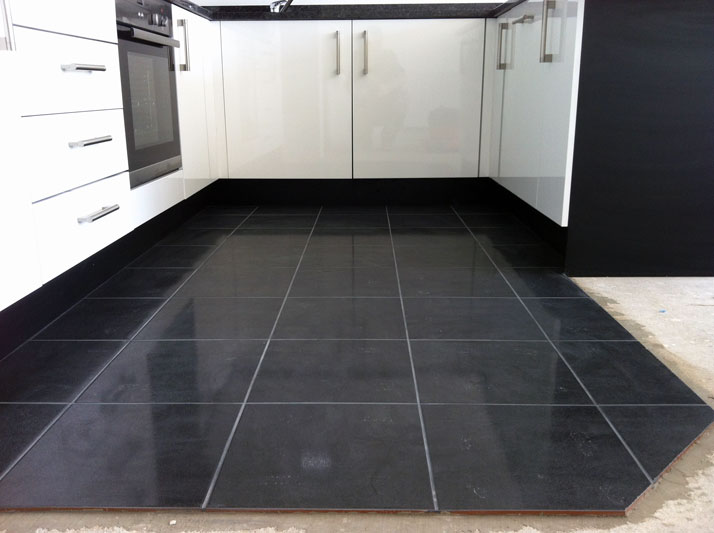We specialise in tiling of any kind or area size so please feel free to contact us for a free quote. We offer both wall and floor tiling and can use ceramic or stone tiles. Below we give an overview of each project:
Wall Tiling
The most important element of high quality wall tiling in bathrooms is the quality of the wall in parts of the bathroom exposed directly to water, such as around the bath or shower. Tiles fitted on to a plasterboard which is fitted around the bath are very unlikely to stay there for a long time. The smallest hole or crack in the grout, and they are in danger of falling off. This happens because plasterboards are wrapped in paper, so the tiles are placed on paper. However, when even the smallest amount of water finds its way between the tiles onto the paper on the plasterboard surface, it will very quickly dissolve the paper and the tiles will simply fall off. Water will not only make the paper perish, it will do this to the plasterboard itself too, and so the whole wall will fall apart very soon.
When plasterboard is used cracks are very likely to appear since plasterboard bends easily cracking the grout between the tiles fitted on it. Bear in mind that grout, although very hard, is also very brittle. An additional problem here is that cracks in the grout are invisible to the naked eye. This means that it will take some time before you discover that you have a problem and then it will be too late to fix it. Rather, you will have to have the whole job redone.
The situation is very similar if the plasterboard is plastered over. Plaster poses no barrier for water and so it will itself come off the plasterboard soon if exposed to water.
This is why we never use plasterboards in wet areas. Instead, we use cement boards. Cement boards are the same shape and size as plasterboards but made out of cement. There is no paper on their surface and they themselves are not dissolvable in water. Therefore, if water ever reaches the wall, the tiles will still remain firmly fixed to it. Usually, a leak is detected by presence of water under the wall, but when this happens all that needs to be done is to fix its cause. This usually involves redoing a small patch of grouting, although if a cement board is used, this is very unlikely to be needed in the first place because they are also much firmer than plasterboard. Cement boards are far superior to plasterboards when it comes to tiling in wet areas, and so in this case investment in them pays off many times over.
Floor Tiles
Compared to the wall tiles, the floor tiles have an additional task: to support you walking on them. This fact imposes on them a few additional requirements.

Firstly, the surface underneath the tiles must be made as rigid as possible. If the floor isn’t concrete (and it isn’t in 95% of households), this is not easy to achieve. The existing floor boards need to be strong and firmly attached to the joists. This typically means replacing a few boards and screwing firmly the whole lot to the joists making sure that you don’t run into electrical cables or water and central heating pipes underneath the floor. Then a strong new floor needs to be fitted on top of the floor boards and firmly screwed to it. The appropriate material for this would be either thick plywood or cement board, depending mainly on the state of the floor boards underneath. After this, the surface of the floor needs to be prepared for taking tile adhesive, and only then the tiling can begin.
Secondly, the back surface of the floor tile has to be completely covered with adhesive, as opposed to the wall tiles where around 60% coverage is enough. Tiles are very hard but also very brittle, so if they are to support your weight without cracking they can’t have air underneath them.
Thirdly, the floor tiles will not stay on the floor for a long time unless good quality suitable flexible adhesive is used. This material is slightly more expensive but it is absolutely essential for lasting good results.